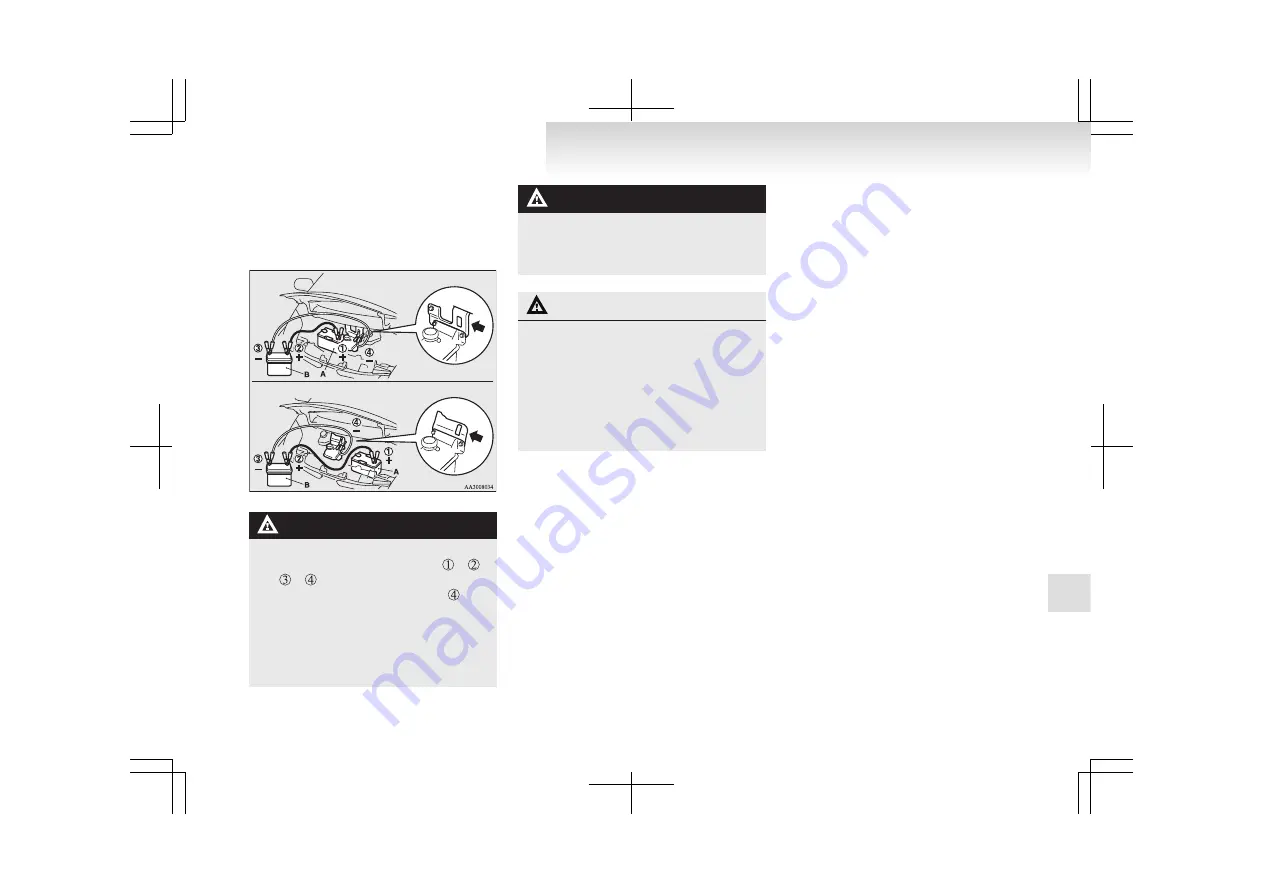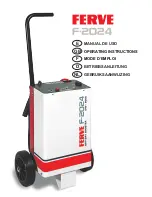
Connect one end of the other jumper cable to
the negative (-) terminal of the booster bat-
tery, and the other end to the designated loca-
tion of the vehicle with the discharged bat-
tery at the point farthest from the battery.
LHD
RHD
WARNING
l
Make sure you observe the following or-
der when connecting the cables: →
→
→
l
Make sure you make connection
to the
correct designated location (as shown in
the illustration). If the connection is made
directly to the negative (-) side of the dis-
charged battery, flammable gases gener-
ated from the battery might catch fire
and explode.
WARNING
l
When connecting the jumper cables, do
not connect the positive (+) cable to the
negative (-) terminal. Otherwise sparks
might cause explosion of the battery.
CAUTION
l
Take care not to get the jumper cable
caught in the cooling fan or other rotat-
ing part in the bonnet room or engine com-
partment.
l
Use the proper cables suitable for the bat-
tery size to prevent overheating of the ca-
bles.
l
Check the jumper cables for damage and
corrosion before use.
8. Start the engine in the vehicle which has the
booster battery, let the engine idle a few mi-
nutes, then start the electric motor unit in the
vehicle with the discharged battery.
9. Check that the ready indicator illuminates.
[When the ready indicator illuminates]
Stop the engine of another vehicle, discon-
nect the cables in the reverse order and
charge the auxiliary battery for more than 30
minutes.
After the auxiliary battery is charged, contin-
ue the process from step 16.
[When the ready indicator does not illuminate]
Both the auxiliary battery and the traction bat-
tery have gone flat at the same time.
Charge the auxiliary battery and the traction
battery by the following procedures (from
steps 10 to 14).
10. Keep connecting the jumper cable to each ve-
hicle, turn the electric motor switch of your
vehicle to the “LOCK” position.
NOTE
l
The jumper cable needs to be connected to
the auxiliary battery when you start charging
the traction battery because the on board
charger etc. operate with a power source of
auxiliary battery.
11. Charge the traction battery by regular charg-
ing. (Refer to “Regular charging” on page
1-04.)
12. When the charging indicator on the instru-
ment cluster is illuminated, stop the engine
of another vehicle, disconnect the cables in
the reverse order.
For emergencies
7-03
7
















































